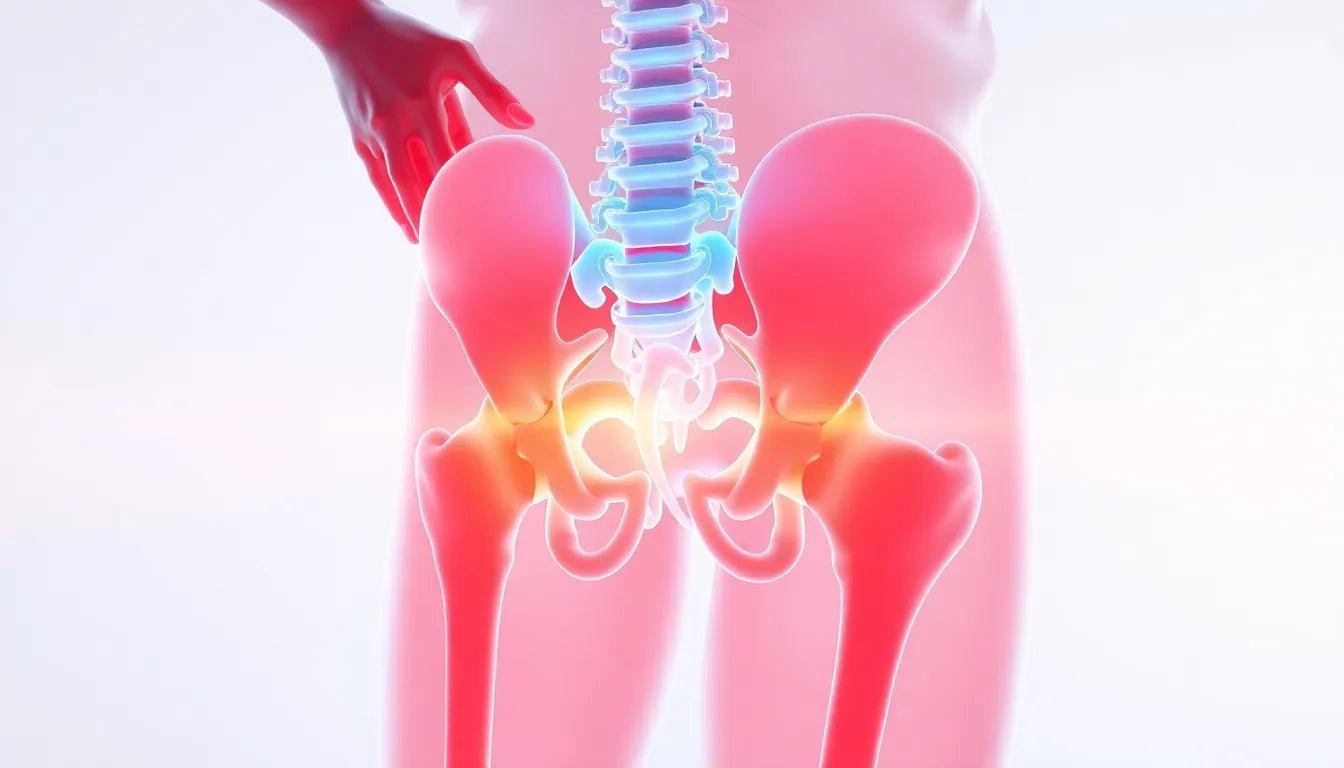Hip pain is a common ailment that affects individuals across various age groups, often hindering daily activities and diminishing the quality of life. Whether it's a persistent dull ache or a sharp, sudden discomfort, understanding the underlying causes and available treatments is essential for finding effective relief. By addressing hip pain promptly, you can prevent further complications and improve your mobility, allowing you to maintain an active lifestyle.
Understanding the prevalence and causes of hip pain
Hip pain can stem from a myriad of causes, ranging from lifestyle factors to underlying medical conditions. It's not uncommon for people to experience hip discomfort due to arthritis, bursitis, or injuries resulting from trauma or repetitive strain. Other potential causes include labral tears, tendonitis, and even referred pain from other areas like the spine. The prevalence of hip pain highlights the importance of recognizing its symptoms early and seeking appropriate care to avoid long-term issues.
Addressing hip pain early on can prevent the progression of more severe conditions. For instance, untreated arthritis can lead to significant joint damage, while ignoring bursitis might cause chronic inflammation. By understanding the potential causes and seeking timely intervention, you can manage hip pain more effectively and avoid compromising your mobility and overall well-being.
Exploring your options for relief
This blog post aims to provide a comprehensive guide to help you navigate the complexities of hip pain. We will delve into the various causes of hip discomfort, discuss diagnostic approaches, and explore a range of treatment options from conservative care to advanced interventions. Additionally, we'll offer self-care strategies that empower you to take charge of your hip health and make informed decisions about managing your pain.
Whether you're experiencing mild discomfort or severe pain, understanding the available options and taking proactive steps can make a significant difference in your recovery journey. By the end of this post, you'll be equipped with the knowledge needed to address hip pain effectively and enhance your quality of life.
Causes of hip pain: Understanding the root of the problem
Hip pain can manifest from a variety of causes, each requiring a specific approach for effective management. Among the most prevalent causes is arthritis, particularly osteoarthritis, which predominantly affects older adults. This condition leads to the degeneration of cartilage, resulting in pain and stiffness. Another frequent culprit is bursitis, characterized by inflammation of the bursa, a small fluid-filled sac that cushions the hip joint, often causing sharp, localized pain.
Labral tears are another source of hip discomfort, often resulting in instability and a clicking sensation within the joint. Such tears usually occur due to repetitive motion or trauma, affecting athletes and active individuals. Injuries and fractures, particularly in individuals with osteoporosis, can result from falls or accidents, contributing to significant pain and mobility issues.
Less common causes include tendonitis, which arises from overuse or repetitive strain, and referred pain, which can originate from other regions such as the spine. Conditions like avascular necrosis, hip impingement, sciatic nerve issues, infections, and even tumors, although rare, can also lead to hip pain. Recognizing these diverse causes is crucial for accurate diagnosis and treatment.
Diagnosis and assessment: Identifying the cause
Accurate diagnosis of hip pain begins with a thorough clinical evaluation. This involves a detailed medical history and physical examination to identify potential causes. Special tests and maneuvers may be employed to pinpoint specific conditions. For instance, a physical therapist or physician might perform range-of-motion tests to assess joint stability and function.
Imaging techniques such as X-rays, MRI, and CT scans play a vital role in diagnosing hip pain. These tools help visualize fractures, arthritis, and labral tears, providing a clearer picture of the underlying issue. In some cases, diagnostic injections and blood tests may be necessary to rule out inflammatory or infectious causes. These assessments are essential for developing a targeted treatment plan.
Treatment approaches: From conservative care to advanced interventions
The management of hip pain typically begins with conservative care. Rest and activity modification are often the first steps, along with over-the-counter pain relief medications such as acetaminophen or NSAIDs. Physical therapy is highly recommended, focusing on strength training and exercises to improve function and reduce pain.

Lumbar support belt
Adjustable lumbar belt for stabilizing and relieving lower back pain during daily activities.
For cases where inflammation is a significant factor, medications like NSAIDs or corticosteroid injections may be prescribed. Assistive devices, including canes and walkers, can provide additional support and safety, particularly for those with mobility challenges.
In situations where conservative measures are insufficient, surgical options may be considered. Minimally invasive procedures, such as arthroscopy, can address specific issues like labral tears or cartilage damage. In severe cases, especially with advanced arthritis, hip replacement surgery offers a high success rate and significant improvement in quality of life.
Advanced pain management techniques, such as radiofrequency ablation and platelet-rich plasma injections, are emerging options for chronic hip pain. These interventions, while still being researched, hold promise for individuals who have not found relief through conventional treatments.
Understanding the various treatment options empowers individuals to make informed decisions about managing their hip pain. Whether opting for conservative care or considering surgical intervention, the goal is to alleviate pain, restore function, and enhance overall well-being.
Prevention and self-management of hip pain
Preventing hip pain and managing existing discomfort often involves lifestyle modifications and self-care strategies. Regular exercise plays a crucial role in maintaining hip health, as it strengthens the muscles around the joint, enhancing stability and reducing strain. Activities like swimming, cycling, or yoga can be particularly beneficial, as they provide low-impact exercise that minimizes stress on the hips.
Maintaining a healthy weight is equally important, as excess body weight can increase the load on the hip joints, exacerbating pain and accelerating wear and tear. A balanced diet rich in nutrients supports joint health and overall well-being. Additionally, avoiding repetitive movements and ensuring proper ergonomic support in daily activities can prevent overuse injuries and posture-related pain.

Women's Posture Shirt™ - Nude
Patented shirt that activates muscles, improves posture, and relieves tension or pain throughout the day.
For those experiencing hip pain, incorporating self-care tips into daily routines can be highly effective. Stretching exercises, such as hip flexor and hamstring stretches, can improve flexibility and reduce tension. Listening to your body is essential; if an activity causes pain, it's vital to modify or cease the activity to prevent further injury. Seeking medical advice when pain persists ensures timely intervention and prevents complications.
Frequently Asked Questions
What are the first steps to take if I experience hip pain?
If you experience hip pain, begin with rest, applying ice to the affected area, and using over-the-counter pain relief medications like ibuprofen or acetaminophen. If the pain persists or worsens, consult a healthcare professional to determine the underlying cause and appropriate treatment plan.
When should I see a doctor for hip pain?
It's advisable to see a doctor if your hip pain is severe, persistent, or accompanied by symptoms such as swelling, redness, or an inability to bear weight on the affected leg. Additionally, if the pain interferes with daily activities or sleep, seeking medical evaluation is recommended.
Can hip pain be prevented?
Yes, hip pain can often be prevented through regular exercise, maintaining a healthy weight, and using ergonomic aids to support proper posture. Incorporating strength training and flexibility exercises into your routine can also help prevent injuries and maintain joint health.
What role do ergonomic aids play in managing hip pain?
Ergonomic aids, such as supportive chairs or cushions, help reduce strain on the hips by promoting proper alignment and support during daily activities. These aids can be particularly beneficial for individuals who spend long periods sitting or standing, as they help prevent posture-related pain and discomfort.
Kilder
- Hospital for Special Surgery. "Hip Pain Causes."
- Hospital for Special Surgery. "Treatment Options for Hip Pain."
- Arthritis Foundation. "Causes and Treatments for Nighttime Hip Pain."
- MU Health Care. "Hip Pain."
- Mayo Clinic. "Hip Pain: Causes."
- Penn Medicine. "Nonsurgical Treatments for Hip Pain."
- Cleveland Clinic. "Hip Pain."
- UW Health. "Hip Pain."
- WebMD. "Hip Pain: Causes and Treatment."
- MedlinePlus. "Hip Pain."
- Penn Medicine. "Hip Pain."
- MyHealth.Alberta.ca. "Hip Pain."
- Aurora Health Care. "Hip Pain."
- UChicago Medicine. "Hip Care."
- Versus Arthritis. "Hip Pain."
- Brown Health. "Orthopedics Institute: Hip."


















